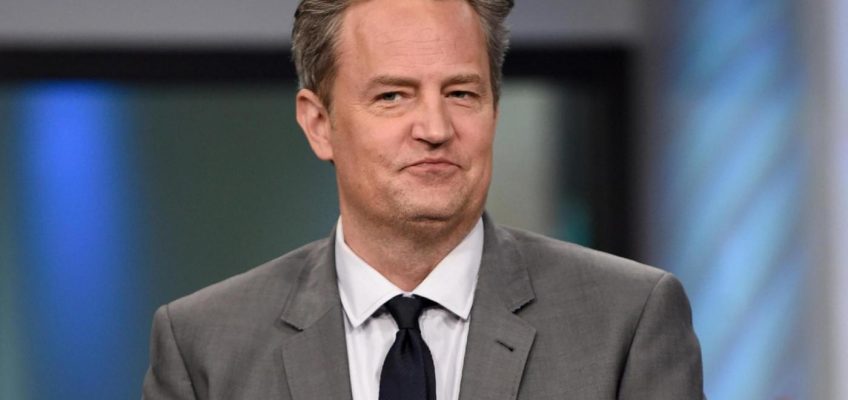I always want something saucy for dinner before and after a holiday meal. I like to have flavors with giant personalities in the mix, too — chiles, olives, spices and a lot of garlic — a counterpoint to the roast turkey and mashed potatoes served with a traditional meal.
The recipes below, starting with Madhur Jaffrey’s simple Goan shrimp curry, are ideal for this week.
1. Madhur Jaffrey’s Goan Shrimp Curry
Madhur Jaffrey has published several iterations of this recipe in her cookbooks. This version, from her MasterClass course, is a full-flavored but very easy to prepare curry, perfect for a novice cook. The coconut milk-based sauce may be prepared in advance and the shrimp added just before serving.
Recipe from Madhur Jaffrey and MasterClass
Adapted by David Tanis
Yield: 4 to 6 servings
Total time: 20 minutes
INGREDIENTS
2 tablespoons olive oil or vegetable oil
2 medium shallots, finely chopped
2 teaspoons hot paprika or Kashmiri red chile powder
1/2 teaspoon ground turmeric
1/2 teaspoon freshly ground black pepper
1/4 teaspoon ground cayenne, or more if preferred
1 1/4 cups coconut milk (from a 13-ounce can)
1 1/2 pounds large or medium shrimp, peeled and deveined
Salt
2 teaspoons lemon juice
Steamed basmati or jasmine rice, for serving
Cilantro sprigs, for garnish (optional)
DIRECTIONS
1. Heat oil in a wide skillet over medium-high. When oil is wavy, add shallots and fry until lightly browned, about 2 minutes. Remove pan from heat and stir in paprika, turmeric, pepper and cayenne. Stir spices to make a paste.
2. Return pan to medium-high heat and add the (well-shaken) coconut milk. Bring mixture to a simmer, stirring well.
3. Add shrimp, season well with salt, and stir to coat. Add lemon juice and turn heat to low. Cook, stirring until shrimp are pink and opaque, 2 to 3 minutes. Taste sauce and adjust seasoning, then serve immediately with steamed basmati or jasmine rice and cilantro (if using).
2. One-Pot Chicken and Rice With Caramelized Lemon
One-pot chicken and rice with caramelized lemon. Food Stylist: Maggie Ruggiero. (Ryan Liebe/The New York Times)
This simple one-pot chicken and rice dish is topped with caramelized lemon slices that add sweet flavor and texture. Thin slices of lemon are cooked in chicken fat and oil until their pulp dissolves, their pith sweetens and their rind softens to the point of being edible. Briny Castelvetrano olives and herby dried oregano are wrapped up in creamy rice and topped with juicy chicken thighs. Fresh parsley and a squeeze of fresh lemon juice on top before serving add brightness and crunch.
By Dan Pelosi
Yield: 4 servings
Total time: 55 minutes
INGREDIENTS
4 bone-in, skin-on chicken thighs (about 1 1/2 pounds)
Salt and black pepper
2 teaspoons dried oregano
Crushed red pepper
2 tablespoons extra-virgin olive oil
2 lemons
1 cup pitted Castelvetrano or kalamata olives, smashed and roughly chopped
6 garlic cloves, minced
1 medium shallot or 1/2 medium onion, minced
2 cups long-grain white rice, rinsed
4 cups (32 ounces) chicken broth
1/4 cup roughly chopped fresh parsley, for serving
DIRECTIONS
1. Heat the oven to 400 degrees. Use paper towels to pat the chicken thighs until dry on all sides. Season the chicken with 1 teaspoon each salt, pepper and dried oregano and a pinch of crushed red pepper.
2. Place a large Dutch oven or other heavy-bottomed pot over medium-high heat and add oil. Let oil heat up for a few minutes. Add thighs to the pot, skin side down, and let cook undisturbed until they self-release from the bottom of the pot, about 5 minutes. Remove from the pot and set aside.
3. Cut 1 lemon into 1/4-inch-thick slices. Add to the pot and cook until caramelized and softened, about 2 minutes. Remove from the pot and set aside.
4. Add the olives, garlic, shallot and 1 teaspoon each salt, pepper and dried oregano to the pot. Cook over medium-low heat, scraping browned bits from the bottom of the pan, until garlic is fragrant, 2 to 3 minutes. Turn the heat up to high, add the rice and broth to the pot, stir to combine and cover until it comes to a boil, about 5 minutes.
5. Remove the pot from heat, add the browned chicken thighs on top of the rice, skin side up, then cover the chicken thighs with the lemon slices. Place the pot, covered, into the oven and bake until the rice and chicken are fully cooked, 25 to 30 minutes. Serve topped with fresh parsley and a squeeze of lemon juice.
3. Espagueti Verde (Creamy Roasted Poblano Pasta)
Espagueti verde (creamy roasted poblano pasta). Food Stylist: Hadas Smirnoff. (Armando Rafael/The New York Times)
At weddings, baptisms and other special occasions across Mexico, pots of spaghetti coated in creamy green sauce sit on most every banquet table. Smoky with charred peppers and tangy with crema, it’s the dish everyone loves. Throughout the country, the herbs in it change — there may be epazote, cilantro or parsley — but there are always roasted poblanos. Traditionally, the chiles are pureed into a sauce to coat the pasta, but you can skip that step to highlight even more of their flavor and texture. Cream, Mexican crema and queso fresco temper any lingering heat and round out the whole dish to a tangy finish.
By Paola Briseño-González
Yield: 4 to 6 servings
Total time: 45 minutes
INGREDIENTS
6 medium poblano chiles (about 1 1/4 pounds), see Tip
3 tablespoons extra-virgin olive oil
4 garlic cloves, finely chopped
Salt and black pepper
1 cup finely chopped flat-leaf parsley, plus parsley leaves for garnish
1/3 cup crema Mexicana or sour cream
1/4 cup heavy cream
1 pound bucatini, spaghetti or other long pasta
1 lemon, halved
4 ounces queso fresco (or other soft but firm cheese, such as ricotta salata), thinly sliced
DIRECTIONS
1. Using tongs, set each poblano directly on the grates of a gas stovetop over a medium flame. Cook, turning occasionally, until skin is blackened on all sides, 2 to 3 minutes per side. (Alternatively, broil the poblanos on a baking sheet about 5 inches from the heat until charred, 6 to 8 minutes per side.)
2. Place charred poblanos in a large bowl; cover with a plate and let steam for 10 minutes to loosen skins. On a work surface, run the dull side of a paring knife across each chile to scrape off the blackened, papery skin. (It’s OK if a bit of the skin remains.) Discard skins, stems and seeds. Return poblanos to the bowl and rinse under cold running water. Any remaining seeds and papery skins will float to the surface. (This rinsing step, while unusual for charred chiles, helps remove almost all the bitter skin that would stand out against the creamy sauce.) Drain chiles well. Cut poblanos in half, then slice lengthwise into very thin strips.
3. Heat oil in a large Dutch oven or other large heavy-bottomed pot over medium-low. Add poblanos and garlic, and season with salt and pepper. Cook, stirring occasionally, until poblanos soften and break down, about 15 minutes. Add chopped parsley, crema and heavy cream, and stir to combine. Remove from heat and cover to keep warm if needed.
4. While poblanos cook, bring a large pot of water to a boil and season with salt. Add the pasta, give it a stir and cook until just al dente. Just before draining, reserve 1 cup pasta water.
5. Drain the pasta and transfer it to the Dutch oven with the poblano mixture, along with 1/2 cup reserved pasta water. Toss until the sauce coats the pasta evenly. If needed, add a little more of the pasta water.
6. Squeeze in juice from 1/2 lemon, taste and squeeze in the juice of the other half, if you like. Season with salt and pepper to taste. Toss one more time before serving, coating pasta with the sauce at the bottom of the pot. Serve topped with queso fresco and parsley leaves.
Tips: When fully ripened and dried, poblano chiles are called anchos, but they’re not what you want for this recipe. Get the fresh, dark green chiles instead. If you can’t find them, substitute fresh green Hatch chiles.
4. Sheet-Pan Sausages and Brussels Sprouts With Honey Mustard
Sheet-pan sausages and brussels sprouts with honey mustard. Food Stylist: Monica Pierini. (Linda Xiao/The New York Times)
This hearty pan of sticky, honey mustard-glazed sausages, Brussels sprouts and potatoes only adds to the argument that sheet-pan dinners make the best weeknight meals. As the sausages roast, they yield a delicious fat that coats and seasons the caramelized vegetables. Use any fresh sausage you like, as long as it pairs well with the honey mustard. Feel free to substitute or add other vegetables such as squash, cherry tomatoes, broccoli, carrots or cabbage. The mustard seeds and nuts provide texture and crunch, but leave them out if you prefer.
By Ali Slagle
Yield: 4 servings
Total time: 30 minutes
INGREDIENTS
1 pound fresh sausage, such as sweet or hot Italian, or bratwurst
1 pound Brussels sprouts, trimmed and halved lengthwise
1 pound small potatoes, like baby Yukon gold or red potatoes, halved
2 tablespoons extra-virgin olive oil, plus more as needed
Kosher salt and black pepper
4 teaspoons honey
1 tablespoon Dijon mustard
1 tablespoon yellow mustard seeds (optional)
1/4 cup almonds or walnuts, chopped (optional)
DIRECTIONS
1. Heat oven to 450 degrees, and place a sheet pan in the oven. Score the sausages in a few places on both sides, making sure not to cut all the way through. Transfer to a large bowl with the Brussels sprouts, potatoes and 2 tablespoons olive oil, and stir until coated. (If the mixture seems dry, add a little more oil.) Season with salt and pepper.
2. Spread the mixture in an even layer on the heated baking sheet, and arrange the vegetables cut-sides down. Roast 15 minutes, until the Brussels sprouts and potatoes start to soften. (The sausages will not be cooked through yet.)
3. Meanwhile, in a small bowl, stir together the honey, mustard and mustard seeds, if using.
4. Drizzle the honey mustard over the sausages and vegetables, and toss or shake to coat. Flip the sausages. Sprinkle with almonds, if using. Roast until the sausages are cooked through and the vegetables are golden and tender, another 10 minutes or so. Season to taste with salt and pepper.
5. Sweet and Sour Eggplant With Garlic Chips
Sweet and sour eggplant with garlic chips. Food Stylist: Barrett Washburne. (Andrew Purcell/The New York Times.)
This vibrant eggplant dish relies heavily on simple pantry staples, but gets its complex flavor from the clever use of garlic: First, you make garlic chips, then you fry eggplant in the remaining garlic-infused oil. Since garlic chips can burn easily, the key here is to combine the garlic and oil in an unheated pan for even cooking. As the oil heats up, the garlic will sizzle rapidly as the moisture cooks off. When it slows down, the garlic slices should be crisp. Be sure to remove the chips just as they begin to turn golden, as they will continue to cook after being removed from the oil. The rest is easy: Sauté the eggplant, create a quick soy sauce glaze, sprinkle with herbs and garlic chips, and serve.
By Sue Li
Yield: 2 to 4 servings
Total time: 20 minutes
INGREDIENTS
4 cloves garlic, very thinly sliced
1/4 cup sunflower oil or other neutral oil
Kosher salt
3 medium Japanese eggplants (about 1 pound total), quartered lengthwise then cut into 2-inch pieces
3 tablespoons low-sodium soy sauce
2 tablespoons light brown sugar
1 tablespoon rice wine vinegar
1/2 to 1 teaspoon red-pepper flakes
1/2 cup fresh cilantro, roughly chopped
1/4 cup fresh basil leaves, roughly chopped
DIRECTIONS
1. Set a small sieve over a heatproof bowl. Combine garlic and oil in a medium skillet and heat over medium-low. Cook garlic until light golden brown and crisp and the bubbles have subsided, 3 to 4 minutes, then quickly strain the garlic chips into the sieve set over the bowl. Transfer the garlic chips to a paper towel-lined plate, season with kosher salt and set aside. Transfer the garlic oil back to the skillet.
2. Heat the garlic oil over medium-high. Add the eggplant in batches, adding more as they shrink in size and space permits, and cook, stirring occasionally, until cut sides of eggplant are golden-brown and skins are slightly wrinkled, 6 to 8 minutes.
3. Add the soy sauce, sugar, vinegar and red-pepper flakes and reduce the heat to medium-low. Simmer, tossing the eggplant to coat, until sauce thickens, 1 to 2 minutes. Serve topped with fresh herbs and garlic chips.
Related Articles
Petey’s BBQ to end its culinary residency at Alary’s Bar in St. Paul
Recipe: Fruit, seeds, almonds and chestnut flour team up to make Energy Balls
Quick Fix: Easy Colorful Vegetable Stew
Recipe: This soup is the best way to use leftover Thanksgiving turkey
Volière Spirits and CrowBar, new distillery and cocktail lounge, to open at Hamm’s Brewery site




